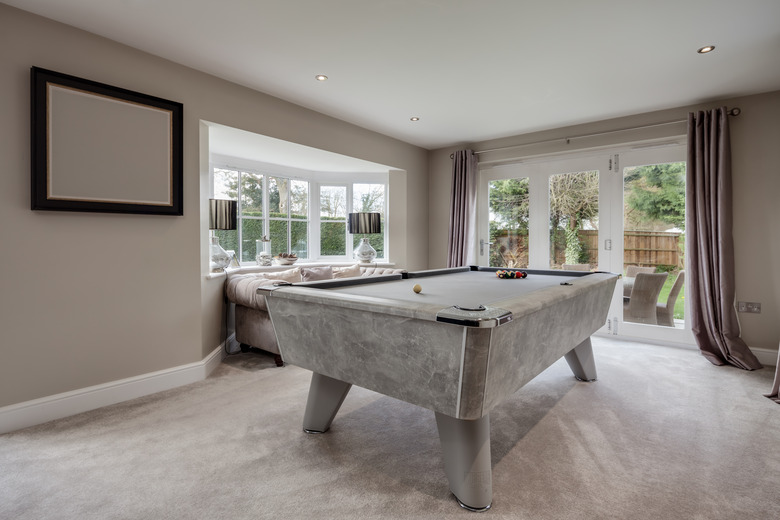How To Protect A Carpet From Heavy Furniture
We may receive a commission on purchases made from links.
The thicker the carpet and padding, the more obvious the indentations left behind in the carpet after moving heavy furniture. The best way to prevent this from happening is to use some form of protection between the furniture legs and the carpet, such as furniture coasters. The coasters prevent narrow furniture legs from digging into and permanently damaging the carpet as well. Since the coasters distribute the furniture's weight over a wider area than the actual legs beneath the furniture, the impressions left in the carpet are minimized.
Coasters for Heavy Furniture
Coasters for Heavy Furniture
Furniture coasters are a lot like drink coasters in that they protect the surface beneath them. Many of them are hard on the bottom so they don't cave under heavy weight, but beyond that, one set looks completely different from another. Some have small walls around the perimeter to prevent the furniture legs from sliding off; others have a carpetlike or grippy material on the top, which also helps keep the legs from sliding. These coasters may even be made of glass, resembling small ashtrays.
Furniture coasters vary in size. It's a good idea to measure the width of each furniture leg where it touches the floor to ensure you purchase coasters that fit. While it's perfectly fine to use coasters far wider than necessary, they may be visible from afar depending on the furniture. Take a look at the furniture from afar to determine just how visible the bottom of those legs are. If they're quite obvious, stick with the smallest coaster that fits, and if the legs are hidden, feel free to use slightly larger coasters as long as they still won't protrude from around the furniture.
Floor Covering to Floor Covering
Floor Covering to Floor Covering
Carpet remnants and rugs with a sturdy woven backing also work well under heavy furniture. Cut scrap pieces of carpet just slightly larger than the width of the legs at the point where they touch the floor or the bottom edges of each heavy furniture piece if it doesn't have legs.
For instance, if a bookcase or cabinet isn't flat wood all the way across the bottom as viewed if tipped on its side, cut strips of carpet slightly wider than the edges of the vertical panels that touch the floor. Place the carpet strips right side up directly beneath where the bookcase or cabinet sits, keeping them as inconspicuous as possible. Using carpet remnants matching the existing carpet in the room helps make them less obvious.
For large, extremely heavy pieces, such as a pool table, placing an area rug beneath the table protects the carpet. Choose an area rug with a sturdy woven backing, as a rug with no backing won't offer as much support for the heavy table. If the furnishing is hard to lift, fold the rug in half and place it alongside the piece so when friends lift one end, you unfold the rug and wiggle it into position. Afterward, ask them to lift the other end to finish positioning the rug.
Shift Items Regularly
Shift Items Regularly
Move heavy items, such as sofas and tables, a couple of inches every month or two to help prevent extreme carpet wear beneath the furniture legs. The longer the furniture sits in one place, the more it settles into the carpet.
